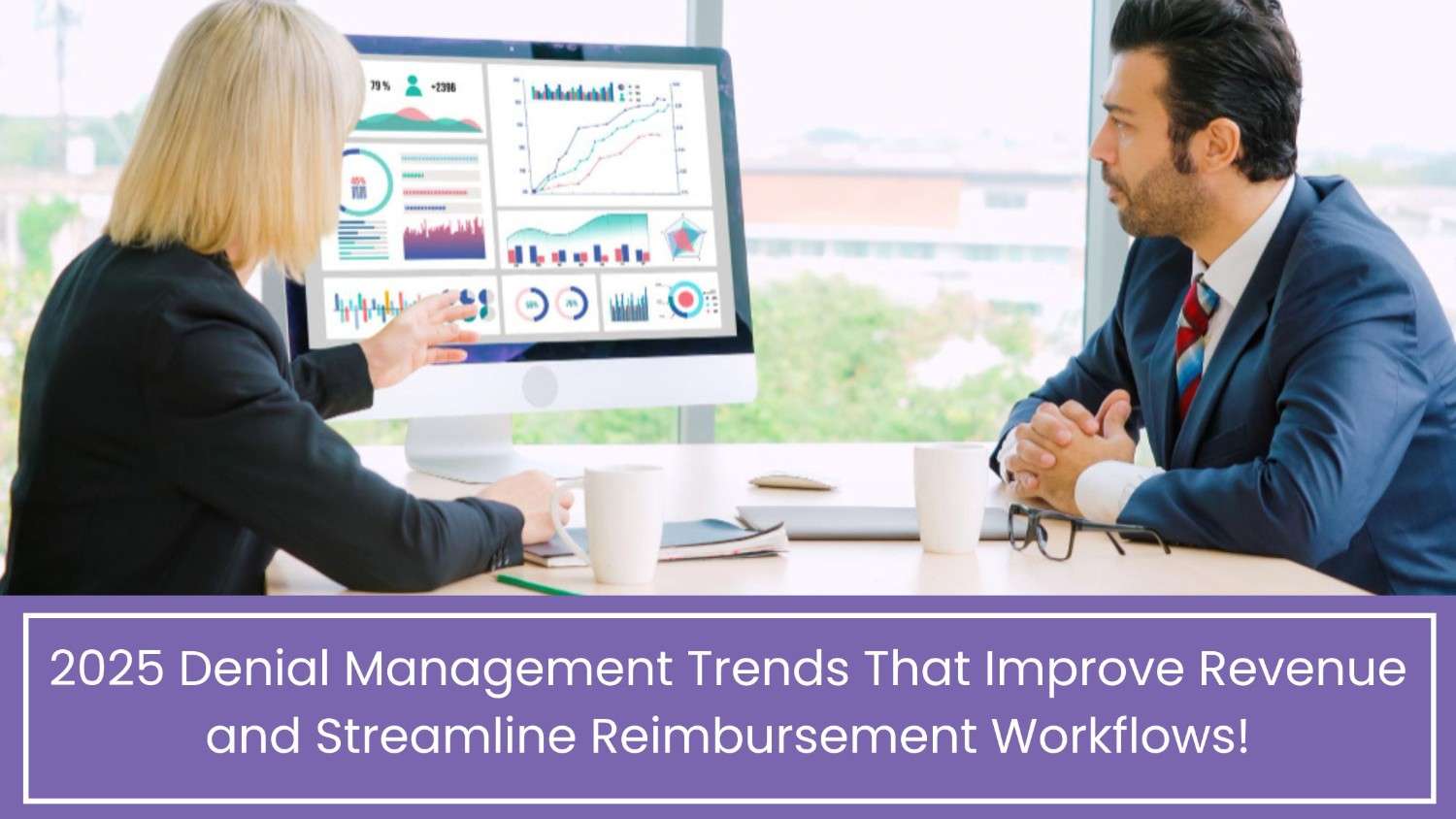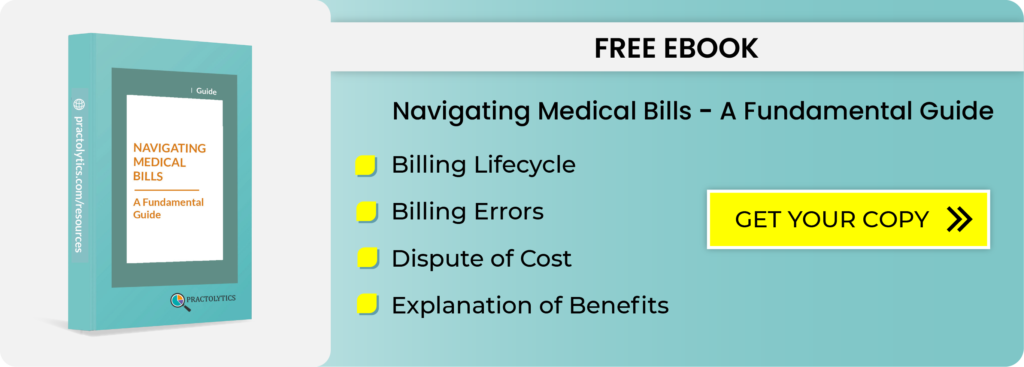Denial Management Strategies for 2025: Trends & Best Practices
Still treating denial management as a clean-up task? In 2025, that mindset falls short. As payer rules tighten and claim edits grow more automated, leading practices are shifting toward proactive denial prevention. Real-time alerts, AI-assisted documentation, and integrated pre-authorization workflows are becoming standard. At Practolytics, we manage millions of claims nationwide and know what’s working. Discover how automation, smarter processes, and denial lifecycle optimization can protect your revenue. Denial management isn’t just about billing anymore—it’s a powerful strategy for financial growth. Let Denial Management Strategies for 2025: Trends & Best Practices guide your practice toward smarter, future-ready solutions.
Table of Contents
2025 Denial Management Trends That Improve Revenue and Streamline Reimbursement Workflows!
Denials. They’re not just frustrating—they’re expensive, time-consuming, and increasingly complicated. As we move through 2025, medical practices across the U.S. are facing more complex reimbursement hurdles than ever before. But here’s the truth: denial management isn’t just about fixing rejected claims anymore. It’s about strategic prevention, smarter workflows, and technology that predicts and prevents errors before they even happen.
At Practolytics, we handle more than 5 million claims annually, support 1,400+ active providers, and work across 28+ specialties in 31 states. We’ve seen firsthand how the denial landscape has shifted—and how the right strategies can make or break your bottom line.
Let’s dive into what’s changing in 2025, what practices should be doing differently, and how your team can turn denial management into a proactive, results-driven part of your revenue cycle strategy.
2025: A New Era in Denial Management!
Denial rates are steadily rising. A 2024 Change Healthcare report found that 1 in 5 claims are denied on first submission, and nearly 35% of those denials are never followed up on. That’s not just revenue leakage—it’s preventable loss.
The difference in 2025? Practices aren’t just reacting to denials anymore. The most successful ones are investing in data, automation, and end-to-end visibility to stay ahead.
What’s Different About Denials in 2025?
We’re not talking about a few missing modifiers anymore. Denials are now rooted in deeper, system-wide issues—documentation errors, AI-driven claim edits by payers, and tighter authorization requirements. Let’s explore the trends that are reshaping how denial management needs to work.
Predictive Denial Prevention Is No Longer Optional
The biggest shift in 2025? Moving from reactive cleanup to proactive prevention. Instead of waiting for denials to roll in, practices are turning to predictive analytics to stop them at the source.
By leveraging machine learning tools and RCM dashboards, practices can now identify patterns like:
- Which CPT codes get denied most by each payer
- Where documentation consistently falls short
- How timing or authorization gaps affect approval
At Practolytics, we use predictive tools to highlight these red flags in real time. This allows practices to correct issues before claims even go out—leading to a measurable drop in denial rates.
Clinical Documentation Is Getting Smarter (and Scrutinized)
In 2025, payers aren’t just looking for basic chart notes. They’re running automated algorithms to detect vague, incomplete, or inconsistent documentation, leading to more denials even for medically necessary services.
The answer? Smarter documentation assistance tools embedded in your EHR.
AI-guided documentation helps providers code more accurately while they chart, reducing downstream errors. Practices using these systems are reporting up to 30% fewer documentation-related denials and improved turnaround times for appeals.
Prior Authorizations Are Being Reinvented with Automation!
We all know the headache of authorization-related denials. But change is finally here. In 2025, electronic prior authorizations (ePA) are gaining traction, especially with Medicare Advantage and commercial payers embracing automation.
Practices that integrate pre-auth workflows into their billing systems see:
- Authorization turnaround times cut by up to 50%
- Fewer claim holds due to missing approvals
- Denials for unauthorized services reduced by over 40%
At Practolytics, we help our clients build pre-auth workflows that sync with both payers and clinical schedules, reducing delays and keeping claims flowing smoothly.
Denial Lifecycle Has to Be Shorter and Sharper!!!
Gone are the days when denials sat on someone’s desk for a week. In 2025, speed is everything. Leading practices are now treating denials as a real-time workflow, with dedicated specialists, automation triggers, and intelligent tracking systems.
Here’s a quick snapshot of how optimised denial workflows compare:
|
Workflow Step |
Traditional Timeline |
2025 Best Practice |
|
Claim Denied |
10–15 Days |
Real-Time Alerts via RCM System |
|
Denial Review |
5–7 Days |
Auto-Routed to Specialist |
|
Resubmission |
7–10 Days |
Same-Day Appeal via AI Support |
|
Payment Reconciliation |
15–20 Days |
Dashboard Tracked in Real-Time |
Practices that compress the denial lifecycle are not only seeing faster payments—they’re also spending 30–40% less time per claim on administrative work.
Training Is Not Enough—Empowerment Is the Goal!
You can train your billing staff for weeks, but without the right tools and visibility, denials will still slip through. In 2025, success comes from empowering teams with centralised platforms that offer:
- Real-time payer rules and edits
- Built-in appeals logic
- Task-based denial routing
- Automated documentation prompts
Practolytics’ denial resolution platform gives billing teams full transparency, making it easier to prioritise, track, and resolve denials with fewer back-and-forths.
How Denials Are Evolving, in Numbers?
Here’s a quick look at how the landscape has changed—and why it’s critical to adapt:
|
Metric |
2020 |
2025 (Projected) |
|
First-pass Claim Denial Rate |
9–11% |
13–15% |
|
Documentation-Related Denials |
28% |
35%+ |
|
Denials Due to Missing Authorizations |
14% |
21% |
|
Claims Never Resubmitted |
31% |
35%+ |
These aren’t just statistics—they’re revenue-impacting realities. And without a data-backed, automated approach, they’ll continue to eat away at your margins.
Is It Time to Outsource?
Managing denials takes time, expertise, and razor-sharp accuracy. And for many practices, handling all of that in-house is becoming increasingly unrealistic.
That’s where outsourcing denial management becomes more than a backup plan—it becomes a growth strategy.
With Practolytics, you gain access to dedicated denial experts, real-time analytics, and automated appeal workflows tailored to your specialty. We’ve helped practices slash denial rates, speed up payments, and take the heavy lifting off their internal teams—all while remaining 100% HIPAA-compliant.
Looking Ahead….
The world of denial management is no longer just about cleaning up mistakes. It’s about strategic prevention, smart automation, and real-time action. As 2025 unfolds, the practices that thrive will be the ones that stop reacting and start anticipating.
At Practolytics, we don’t just resolve denials—we help practices prevent them. And with more than two decades of RCM experience, we’re here to help your team turn denials into dollars.
ALSO READ – Simplifying Revenue Management: How Medical Billing Services Empower Small Practices
Talk to Medical Billing Expert Today — Get a Free Demo Now!






